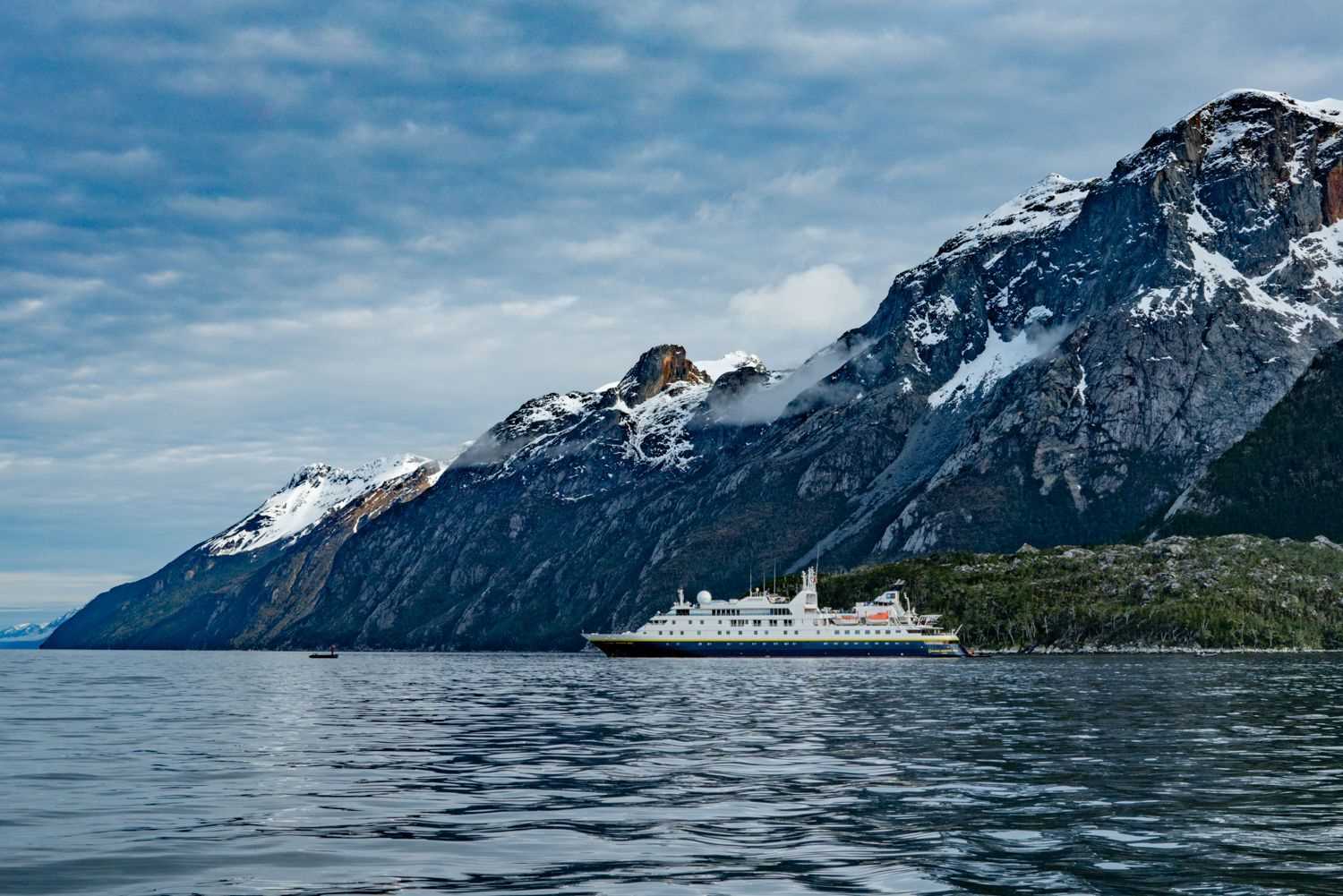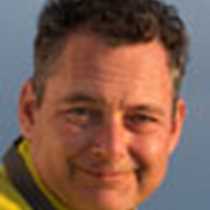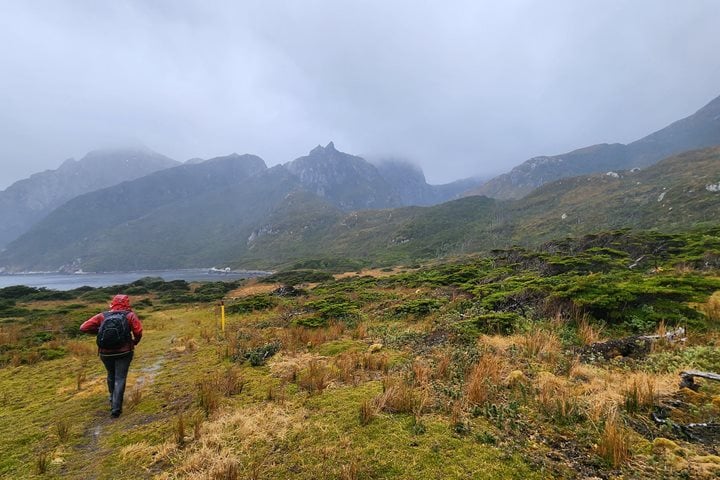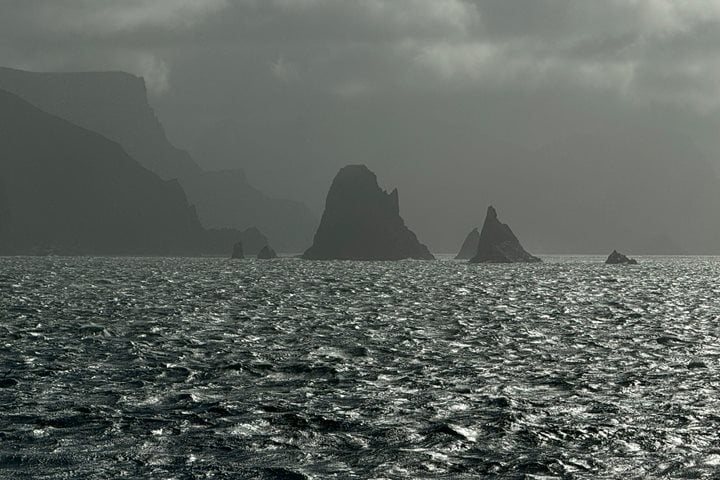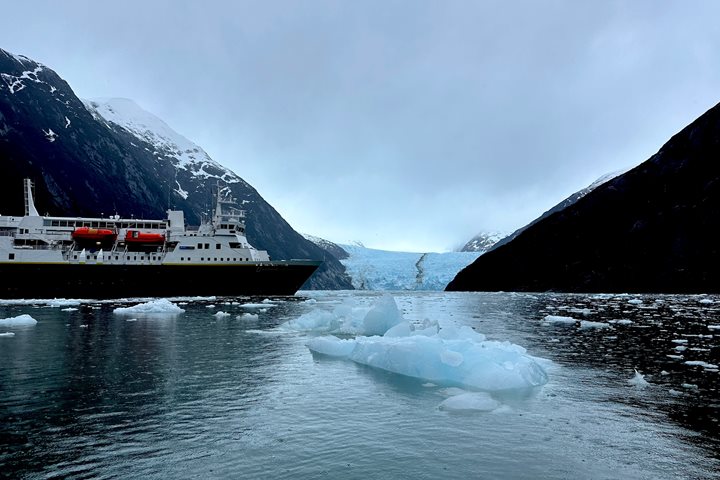After a day at sea navigating some stunning Chilean fjords, we were eager to stretch our legs when we awoke this morning in Karukinka Reserve. This area is governed by the Wildlife Conservation Society (WCS), an organization that works to conserve beauty and biodiversity. Luckily for us, we have a representative of the WCS aboard our ship, so we were able to learn all about this diverse wilderness area.
The tall snow-capped mountains surrounding us were beautifully lit by the morning sun, and the vast openness made one feel small and humbled. As we cruised to shore in our Zodiacs, we began spotting the largest existing pinniped, the southern elephant seal. Near the landing site, we saw around 100 Andean condors circling. Upon closer examination, we found the condors feeding on a dead elephant seal - a rare thing to see! We walked over driftwood, through meadows, and into the fungi-heavy forest. Guests who were feeling extra adventurous trekked to a scenic waterfall. It was a wonderful introduction to the southern Chilean ecosystem.
We had a second opportunity to land this afternoon and spent our time in Ainsworth Bay. It was a boardwalk hike through low lying foliage until we reached a beech tree forest. Lichen and fungi were abundant, creating a unique bio-network. One guest described the hike as Disneyland for fungi. The afternoon included other fun sites such as beaver dams, southern elephant seals, and birds (birders were excited to see the kingfisher).
While guests were ashore, the undersea team went scuba diving. By capturing video of the underwater environment, they help to complete a larger picture of the area’s ecology. This particular undersea environment was a chilly 45 degrees Fahrenheit and full of kelp, crabs, muscles, tunicates and squid eggs. Their favorite part of the dive was seeing numerous, large king crabs!

